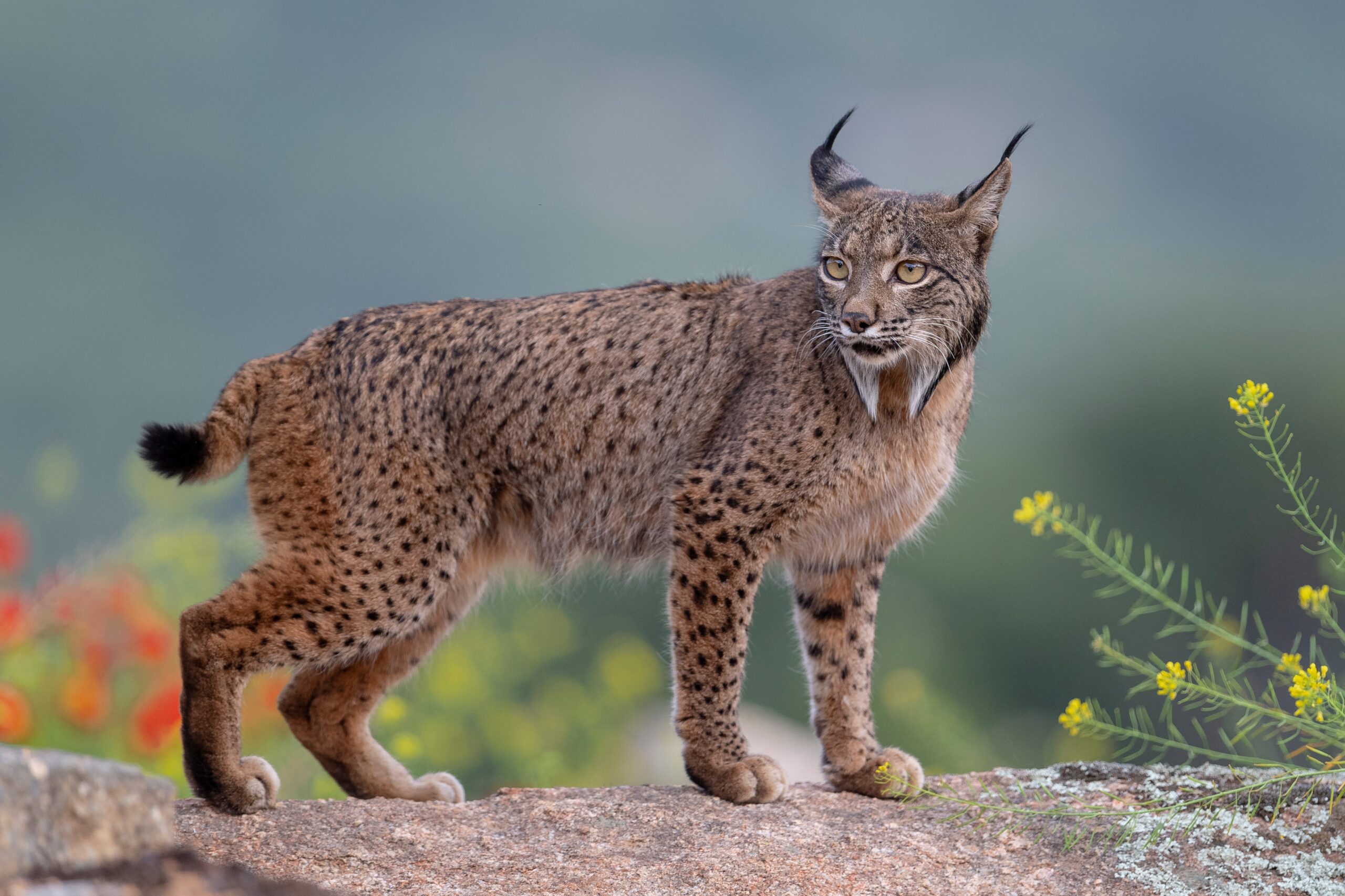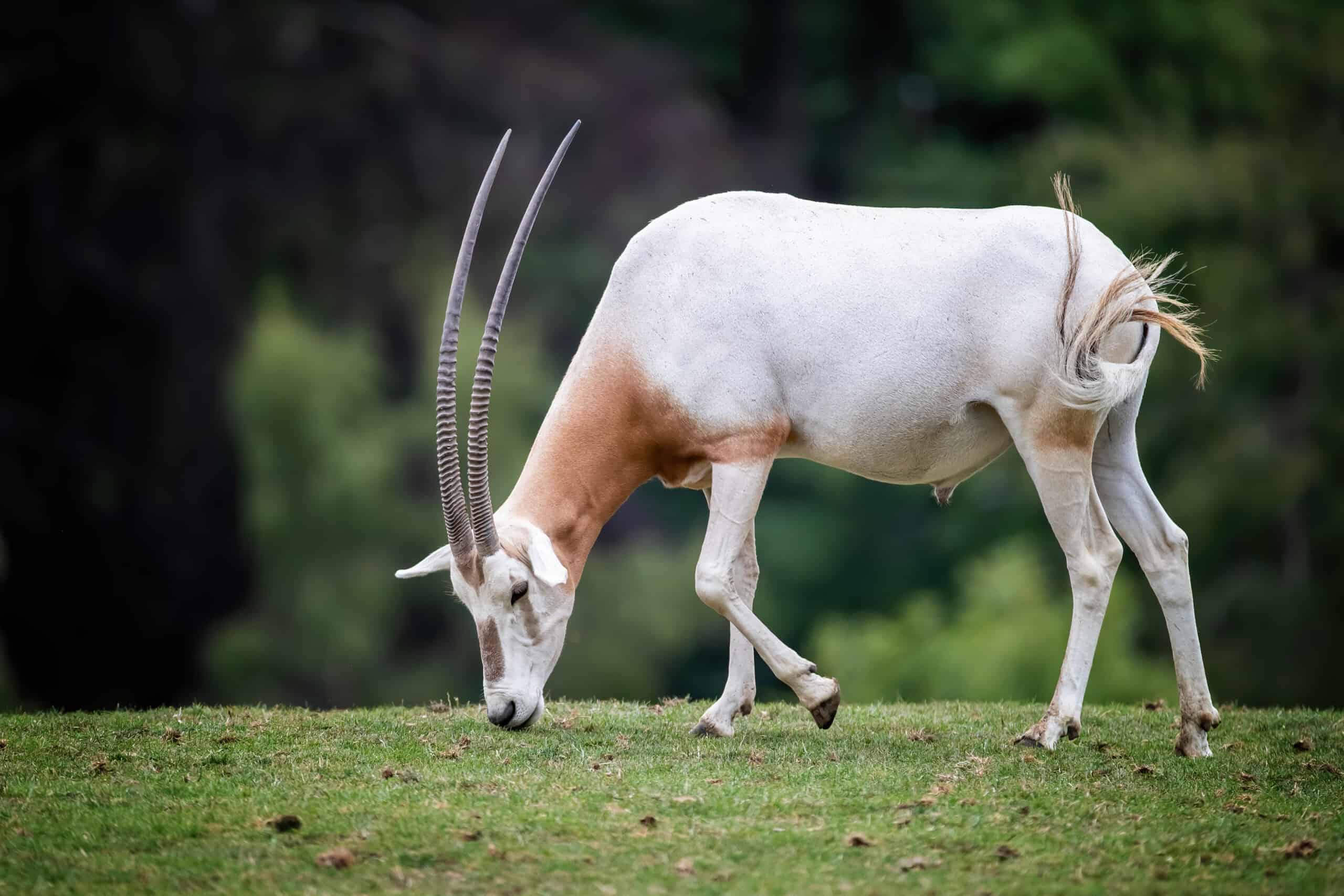Human activity is rapidly impacting wildlife across the globe, pushing many native species to the brink of extinction. From habitat destruction to poaching, the consequences are dire. Many animals now face a future of uncertainty, with their populations dwindling at alarming rates. The following are examples of native species threatened by human actions, each with its own unique challenges.
Iberian Lynx

The Iberian Lynx, native to the Iberian Peninsula, is one of the world’s most endangered cats. Its population has been decimated by habitat loss, primarily due to urban development and agriculture. This lynx is known for its distinctive tufted ears and short, stubby tail. Rabbit populations, their main food source, have also declined, further threatening their survival. Conservation efforts have helped, but the species remains critically endangered.
Andean Cat

The Andean Cat is a small, elusive wild feline found in the Andes Mountains of South America. It inhabits rocky, arid regions at high altitudes, making it difficult to spot. Unfortunately, habitat destruction from mining and agriculture is a significant threat to its existence. Poaching and killing by local communities also contribute to its declining numbers. The Andean Cat’s survival depends heavily on conservation efforts focused on protecting its natural habitat.
Ganges River Dolphin

The Ganges River Dolphin, an endangered freshwater dolphin, resides in the rivers of India, Bangladesh, and Nepal. Pollution, dam construction, and water diversion have drastically reduced its population. Known for its long, slender beak and lack of a crystalline eye lens, it relies heavily on echolocation to navigate and hunt. Overfishing and accidental capture in fishing gear also pose a significant threat. Immediate action is required to prevent this species from disappearing entirely.
Northern Hairy-nosed Wombat

The Northern Hairy-nosed Wombat is one of the world’s rarest marsupials, native to Queensland, Australia. Habitat destruction and competition for food with introduced species like cattle and sheep have greatly impacted its survival. These wombats live in semi-arid environments and are nocturnal, feeding primarily on grasses. Conservation efforts, including protected reserves and predator control, have stabilized its population, but it remains critically endangered.
Blue-throated Macaw

The Blue-throated Macaw, native to Bolivia, is a striking parrot known for its vibrant blue and yellow plumage. Illegal pet trade and habitat loss from deforestation are the main reasons for its endangered status. These birds rely on specific tree species for nesting, which are becoming scarce due to logging. They are also culturally significant in Bolivia, further fueling illegal capture. Preservation of their habitat and strict regulation of trade are vital for their survival.
Maui’s Dolphin

Maui’s Dolphin is one of the smallest and rarest dolphin species, found only off the west coast of New Zealand’s North Island. Human activities, such as commercial fishing and coastal development, have drastically reduced their numbers. This dolphin is easily identifiable by its rounded dorsal fin and small size. Bycatch in fishing nets remains the biggest threat to their population. Conservation measures are critical to prevent the extinction of this vulnerable species.
Addax

The Addax, also known as the white antelope, is native to the Sahara Desert. It has adapted to extreme desert conditions, surviving on sparse vegetation and minimal water. Overhunting for its horns and habitat loss due to oil exploration and military activity have driven this species to the brink of extinction. The Addax is now critically endangered, with only a few individuals left in the wild. Strict protection and habitat restoration are essential for its recovery.
Kakapo

The Kakapo is a large, flightless parrot native to New Zealand, known for its green, mossy feathers and owl-like face. It is nocturnal and primarily herbivorous, feeding on fruits, seeds, and plants. Human activity, such as habitat destruction and the introduction of predators like cats and rats, has caused a dramatic decline in its population. Conservation efforts, including breeding programs and predator control, have been somewhat successful, but the species remains critically endangered.
Siamese Crocodile

The Siamese Crocodile is a freshwater species native to Southeast Asia. It has suffered immense population declines due to habitat destruction, illegal hunting, and competition with farmed crocodiles. This reptile is medium-sized, with a broad snout and dark greenish-grey skin. Once widespread, it now survives in small, isolated pockets. Conservation programs focusing on habitat protection and breeding are crucial to its survival.
Hellbender Salamander

The Hellbender Salamander is one of the largest salamanders in North America, native to eastern U.S. rivers. Its numbers are dwindling due to water pollution, habitat destruction, and disease. This amphibian has a flattened body, wrinkled skin, and primarily feeds on crayfish. Clean, fast-flowing streams are vital for its survival, but human interference has made these habitats scarce. Conservation efforts focus on water quality improvements and habitat restoration.
Cross River Gorilla

The Cross River Gorilla is one of the world’s most endangered primates, found in the forests of Nigeria and Cameroon. Habitat loss from logging and agriculture, coupled with poaching, has reduced its population to less than 300 individuals. These gorillas are shy, with smaller groups and distinctive physical traits like shorter limbs. Conservation efforts include anti-poaching initiatives and protected reserves, but the species remains critically endangered.
Scimitar-horned Oryx

The Scimitar-horned Oryx once roamed across North Africa’s deserts but is now extinct in the wild. Overhunting, habitat destruction, and desertification have all contributed to its decline. It is recognizable by its long, curved horns and white coat with reddish-brown markings. Captive breeding programs and reintroduction efforts are in place, but restoring the species to the wild is challenging due to ongoing habitat loss.
Santa Cruz Island Fox

The Santa Cruz Island Fox is native to California’s Channel Islands and is one of the smallest canid species. It nearly went extinct due to predation by golden eagles and disease introduced by domestic animals. This fox has a greyish coat and a compact body, making it well-adapted to its island environment. Conservation efforts, including eagle removal and vaccination, have helped its population recover, though it remains vulnerable.
Black-footed Ferret

The Black-footed Ferret, once thought to be extinct, is native to the grasslands of North America. Its population plummeted due to habitat loss and the decline of prairie dogs, its primary food source. This ferret is slender, with distinctive black markings on its feet and face. Breeding programs and habitat restoration have helped reintroduce it to the wild, but it remains endangered and closely monitored.
Dhole

The Dhole, or Asiatic wild dog, is native to South and Southeast Asia. Habitat loss, competition with other predators, and disease have severely reduced its numbers. These highly social animals live in packs and are known for their reddish coat and large, rounded ears. Conservation efforts focus on protecting habitats and managing human-wildlife conflict to prevent further decline.
Pygmy Hippopotamus

The Pygmy Hippopotamus is a small, elusive species native to the forests of West Africa. Deforestation and hunting have drastically reduced its population, pushing it to the brink of extinction. Unlike its larger relative, the pygmy hippo is more solitary and spends more time on land. Conservation efforts focus on habitat protection and reducing hunting pressures, but the species remains critically endangered.
This article originally appeared on Rarest.org.
More from Rarest.org
13 Coveted Antique Glassware That Fetches Top Dollar

Tiffany Favrile Glass is renowned for its iridescent finish. Each piece is hand-blown, showcasing vibrant colors that shift in the light. Read More.
20 Endangered Animals Pushed to the Brink by Habitat Loss

Many species are being pushed to the edge of extinction, with habitat loss playing a critical role in their decline. Read More.
13 High-End Speaker Brands for Audiophiles

For audiophiles, sound quality matters above everything else. High-end speakers deliver the depth, clarity, and precision that elevate the listening experience. Read More.
